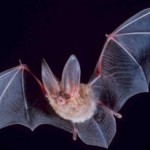Weekly Wrap Volume 103
THE SURPRISINGLY RECENT TIME TESTS USING RABBITS AND FROGS WERE THE GOLD STANDARD TO ACCURATELY DETECT HUMAN PREGNANCY
 We live in an age where determining if a woman is pregnant is ridiculously simple and cheap. Go back a few decades, though, and the latest and greatest technology for determining whether a woman was with child involved a syringe full of urine and little animals. Yes, as bizarre as it’s going to sound, you really can use things like rabbits (or a number of other animals) to detect whether a woman is pregnant. To be clear, this isn’t just an old wives’ tale that’s only correct just enough to keep people believing it via confirmation bias or something like that, “The Rabbit Test”, as it is aptly known, is around 98.9% accurate (for reference, modern home pregnancy tests tend to range from 97%-99% in accuracy). Some version of this test has been the de facto way to test whether a woman was pregnant from the time the method was discovered in 1927, right up until the 1970s. The only real improvement…(more)
We live in an age where determining if a woman is pregnant is ridiculously simple and cheap. Go back a few decades, though, and the latest and greatest technology for determining whether a woman was with child involved a syringe full of urine and little animals. Yes, as bizarre as it’s going to sound, you really can use things like rabbits (or a number of other animals) to detect whether a woman is pregnant. To be clear, this isn’t just an old wives’ tale that’s only correct just enough to keep people believing it via confirmation bias or something like that, “The Rabbit Test”, as it is aptly known, is around 98.9% accurate (for reference, modern home pregnancy tests tend to range from 97%-99% in accuracy). Some version of this test has been the de facto way to test whether a woman was pregnant from the time the method was discovered in 1927, right up until the 1970s. The only real improvement…(more)
 In 1999 a teacher at Uniontown High School in Kansas encouraged four students to do a project for a national History Day contest. Norm Conard told his 9th-grade students—Elizabeth Cambers, Megan Stewart, and Janice Underwood, and 11th-grader Sabrina Coons—that the project should reflect the classroom motto, “He who changes one person, changes the world entire.” The quote is from the Jewish holy book the Talmud, and Conard suggested basing the project on the Holocaust. He showed them a 1994 news clipping about “other Schindlers,” people who, like Oskar Schindler (made famous in the film Schindler’s List), had saved Jews from the Nazis during World War II. One of the people mentioned was a Polish woman named Irena Sendler, who was said to have saved 2,500 Jewish children from the Warsaw ghetto…(more)
In 1999 a teacher at Uniontown High School in Kansas encouraged four students to do a project for a national History Day contest. Norm Conard told his 9th-grade students—Elizabeth Cambers, Megan Stewart, and Janice Underwood, and 11th-grader Sabrina Coons—that the project should reflect the classroom motto, “He who changes one person, changes the world entire.” The quote is from the Jewish holy book the Talmud, and Conard suggested basing the project on the Holocaust. He showed them a 1994 news clipping about “other Schindlers,” people who, like Oskar Schindler (made famous in the film Schindler’s List), had saved Jews from the Nazis during World War II. One of the people mentioned was a Polish woman named Irena Sendler, who was said to have saved 2,500 Jewish children from the Warsaw ghetto…(more)
 THE NOT-SO-HOLY ORDER OF THE FRIARS OF ST. FRANCIS OF WYCOMBE
THE NOT-SO-HOLY ORDER OF THE FRIARS OF ST. FRANCIS OF WYCOMBE
Established in West Wycombe by Sir Francis Dashwood in 1749, the Brotherhood of St. Francis of Wycombe was anything but saintly. Devoted to wicked fun and debauchery, for the next two decades, many notable individuals in England counted themselves members, such as the 4th Earl of Sandwich, John Montagu, Baron George Dodington, member of Parliament Thomas Potter, and, while not a full member, distinguished guest Ben Franklin, who was a friend of Dashwood’s and is known to have attended meetings when in town. In these meetings, the group drank, ate and fornicated at will, trying their hardest to live up to the future moniker of “Hellfire Club”. Although the Order first met in London at the George and Vulture pub, beginning in 1750, Dashwood leased Medmenham Abbey, a rundown former Cistercian abbey, which was close to his home. Rebuilding it and excavating…(more)
 IS PET FOOD SAFE FOR HUMANS TO EAT?
IS PET FOOD SAFE FOR HUMANS TO EAT?
Nearly 80 million American households have a pet, with a majority being a cat or dog. Additionally, 42% of homes have more than one pet. A lot of food is needed to feed all of these animals, so it should come as no surprise that pet food is a 21 billion dollar industry. While this food is specially made for our four-legged pals, the question many have (including this researcher) is- in a post-apocalyptic world where human food was scarce, could I eat my cat’s wet food? Would I get sick from eating my dog’s milk bones? For the short answer, while it certainly doesn’t look appetizing, nor (probably) taste any good, the answer is, for the most part, yes- humans can safely eat their pets’ food… but there are some important caveats which we’ll get into. For the long…(more)
This Week’s YouTube Videos (Click to Subscribe!!)
- Are Some People Really Born With Tails?
- 10 Amazing Facts #23
- Why Some Countries Refrigerate Their Eggs And Others Don’t
- Why Do Spicy Foods Cause Your Nose To Run?
- Where Does the Dollar Sign Come From?
- Why Aren’t There Many Female Commercial Pilots?
- Is It Safe To Eat Cheese Rinds?
Bonus Quick Facts
- In 1948, Huang Yijun of China became pregnant, but later found out that she had an ectopic pregnancy, meaning the egg had not attached in the uterus, resulting in an exceptionally rare abdominal pregnancy. While babies that attach in such a way (often to things like the woman’s liver, bowels, diaphragm, etc.) occasionally survive, Haung’s did not. Unfortunately for Haung, she did not have the money to pay to get the baby removed from her abdomen and it was too large for her body to get rid of naturally. So what does the human body do in that case? It builds up calcium deposits around the dead tissues, resulting in a so-called “stone baby.” Huang carried this baby from 1948 to 2009. At the age of 92, she finally had it removed.
- If you’re wondering why rabbits are considered prolific breeders, it has less to do with them getting it on more than many other animals, necessarily, and more to do with the time frames involved in the process of producing new rabbits. A baby rabbit becomes sexually mature in an average of just about 5-6 months, and sometimes even sooner. They can potentially live up to around 10 years. Further, it takes only around a month from the point of getting pregnant for a female rabbit to give birth. Their litters can include as many as a dozen rabbits! What makes this even more astounding is that the female rabbit can get pregnant as soon as the next day after giving birth. Rabbits are induced ovulators, so the females are pretty much ready to get pregnant anytime they mate (assuming they aren’t already pregnant), with the mating itself triggering the ovulation. So even just a single female can give birth to several dozen baby rabbits per year. Given this, combined with the fact that the babies are ready to make babies at the stage when most human offspring are still mostly just poop and drool factories, you can see how rabbits got this randy reputation.
- While Neil Armstrong got to be the first to take a step on the Moon, Buzz managed his own historic “First!”, becoming the first person to urinate on the Moon. Take THAT Mr. “One Small Step!”
- During STS-37, astronaut Jay Apt’s suit was punctured while space walking. The hole size was 1/8 of an inch, but Apt’s skin sealed it. In fact, he didn’t even realize this had happened until after he got back in the ship and saw the red mark on his hand. Even then, he didn’t think anything of it, but ground control knew he had punctured his suit. They just hadn’t told him as there appeared to be no immediate danger and they didn’t want to alarm him.
- The United States once planned on nuking the Moon. The project was labeled “A Study of Lunar Research Flights” or “Project A119” and was developed by the U.S. Air Force in the late 1950s. It was felt that this would be a relatively easy thing to do and would also boost public perception of how the U.S. was doing in comparison to the Soviet Union in terms of the space race. A young Carl Sagan was one of the scientists who worked on this project, hired to study how exactly the resulting cloud would expand on the Moon so that they could be sure it would be clearly visible from Earth. Sagan felt the project had scientific merit in that the cloud could be closely examined by scientists. The project was eventually scrapped as it was determined that the public would not respond favorably to the U.S. dropping a nuclear bomb on the Moon.
- According to research done on the roads of New Zealand, the common zebra striped crosswalk without any additional signaling actually increases the chances of pedestrians getting hit by a car by 28% over if the person had just jaywalked. It is thought this is the case because pedestrians crossing in crosswalks are much less careful than those crossing the road elsewhere, even to the point that many people observed in studies don’t even bother to look if anyone is coming before entering a crosswalk. A similar study done in the United States on 1000 marked and unmarked popular crossing areas showed that marked locations had a much higher rate of pedestrian accidents than unmarked so long as there weren’t any other signals included with the crosswalk, such as a stop sign/light or flashing lights. They also found that including a raised “safety” median for pedestrians to stand in the middle of roads made no difference to the safety of the pedestrians regardless of the number of lanes on the road.
Other Interesting Stuff:
 A Harrier Jet, Pepsi, and John Leonard
A Harrier Jet, Pepsi, and John Leonard
Back in the halcyon days of 1995, Pepsi launched their aptly titled “Drink Pepsi, Get Stuff” campaign that allowed customers to earn points on every Pepsi product they bought and then exchange them for things like Pepsi branded t-shirts and hats. The promotion was a roaring success and resulted in nothing of note happening whatsoever… unless of course you count the guy who sued them because they refused to exchange 7,000,000 Pepsi points for a Harrier Jet. The man in question was John Leonard and in the later months of 1995 he turned on his TV and saw this ad announcing the Pepsi Stuff promotion. For those who aren’t interested in watching the advertisement, it essentially shows a teen on his way to school, highlighting items one can buy with Pepsi points, such as a Pepsi T-shirt for 75 points, a leather jacket for 1450 points, etc…(more)
 The Greatest Practical Joke of the 19th Century, The Berners Street Hoax
The Greatest Practical Joke of the 19th Century, The Berners Street Hoax
The year was 1809. Famed English author, Theodore Hook, made a bet with one of his close friends, the noted architect and writer, Samuel Beazley, that within one week, he could make any house in London the most talked about place in the city. The house he ended up choosing was the home of the widow Mrs. Tottenham on 54 Berners Street, London, which was the same street that Earl Stanhope and the Bishop of Carlisle and of Chester, among other wealthy and well-to-do individuals, lived on at that time. It isn’t known why Hook chose Mrs. Tottenham’s home as no connection between the two is known and Hook himself never explained his selection. It’s entirely possible that it just happened to be a location where the home across the street could be rented and was also in a fairly well-to-do part of town which would help assure Hook’s plan would work…(more)
 Is Eating Your Boogers Good For You?
Is Eating Your Boogers Good For You?
Does physically taking boogers out of your nose, putting them in your mouth and swallowing boost your immune system? The short answer is probably not. You ingest your snot all the time without needing to channel it through your mouth. So if there is a benefit here, you get it without needing to munch your nose nuggets. That said, there are a couple medical professionals willing to comment on the benefits of mining for green candy, particularly touting benefits to one’s immune system. One of the more credible sounding proponents of the habit is Scott Napper, a professor of biochemistry who made waves around the world’s media outlets in 2013 when he half-heartedly proposed to a group of his students that eating one’s boogers allows our bodies to safely develop anti-bodies to the weakened pathogens present in…(more)
The use of lead in everyday objects dates back to the ancient Romans. They used lead in makeup, as an additive in food and wine, in pewter dinnerware, and many other items, including paint. The inexpensive metal was even used in the pipes that transported water throughout the Roman Empire. Lead continued to be used throughout history and into modern day. So it was no surprise that no one thought twice about adding lead to paint. But why did manufacturers add the heavy metal to paint? What purpose did it serve? Different lead compounds are added to the paint as a pigment, creating a specific color depending on whichever compound is used. For example, lead (II) carbonate, known as white lead, makes the paint a white or cream color and the use of lead tetroxide makes a bright red paint. The heavy metal additive also decreases the amount…(more)
The saying “blind as a bat”, simply isn’t correct. The truth is that all 1,100 bat species can see and often their vision is pretty good, although not as excellent as many other night-hunting animals. There are two main groups of bats, which are believed to have evolved independently of each other, but both from a common ancestor. The first group, Megachiroptera, are mostly medium-sized or large bats who eat fruits, nectar, and sometimes small animals or fish. These species have pronounced visual centers and big eyes as they use senses of vision and smell to capture their prey. For example, Flying Foxes are able not only to see well during daylight, but also can see in color. They actually rely on their daylight vision and cannot fly during moonless nights…(more)
| Share the Knowledge! |
|






